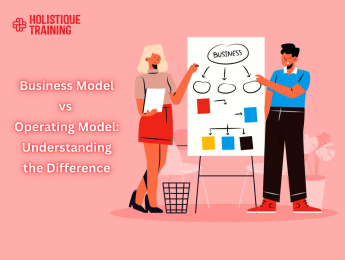Introduction
In an era marked by unprecedented change and technological advancement, businesses are increasingly finding themselves at a crossroads, necessitating a fundamental shift in their operations, culture, and strategies to stay relevant and competitive. This pivotal shift, known as business transformation, embodies the strategic realignment of an organization’s goals, processes, and technologies to better adapt to new market realities and capitalize on emerging opportunities. At its heart, business transformation is about envisioning a new future for the company—one that not only responds to the current challenges and trends but also anticipates future demands. This article delves into the essence of business transformation, exploring its importance, the process it entails, and its impact on organizational growth. Through this exploration, we aim to shed light on how businesses can navigate this transformative journey effectively, ensuring they not only survive but thrive in today’s dynamic business environment.
What Is Business Transformation?
Business transformation refers to the comprehensive process of making fundamental changes to the systems, processes, people, and technology within an organization to adapt to changing market dynamics, embrace new opportunities, and address challenges that threaten its long-term viability and success. It involves rethinking and radically altering the organization's operations and business model to achieve significant improvements in efficiency, effectiveness, and competitive advantage. This transformation can encompass everything from digital adoption and operational restructuring to cultural shifts and innovation strategies.
The Essence of Business Transformation
At its core, business transformation is about ensuring an organization remains relevant, competitive, and able to thrive in an ever-evolving business landscape. Unlike incremental changes or minor improvements, business transformation requires a radical reevaluation of how an organization conducts its business, necessitating bold strategic pivots and embracing new ways of working.
Why Business Transformation Is Crucial Today?
1. Rapid Technological Advancements:
The pace of technological innovation has never been faster, with digital technologies revolutionizing how businesses operate and compete. Companies must transform to leverage these technologies effectively, from cloud computing and big data analytics to artificial intelligence (AI) and the Internet of Things (IoT).
2. Changing Consumer Expectations:
Today's consumers demand more personalized, convenient, and seamless experiences, driven by their interactions with digital-native companies. Businesses must transform to meet these expectations, reimagining customer journeys and leveraging data to deliver tailored services and products.
3. Intensified Global Competition:
The globalization of markets means companies face competition not just from traditional rivals but also from new entrants and disruptors worldwide. Business transformation enables organizations to stay ahead of the competition by innovating faster, entering new markets more effectively, and differentiating themselves through unique value propositions.
4. Regulatory and Environmental Pressures:
Increasingly stringent regulatory requirements and a growing emphasis onsustainability and social responsibility necessitate significant changes in how businesses operate. Transformation initiatives can help companies comply with these regulations, reduce their environmental footprint, and align with societal values.
5. Necessity for Agility and Resilience:
The COVID-19 pandemic underscored the importance of agility and resilience in the face of unforeseen challenges. Businesses that can transform quickly in response to external shocks are better positioned to navigate crises and emerge stronger.

The Process of Business Transformation
Business transformation typically follows a structured process that begins with a clear vision and strategic objectives. This process involves assessing the current state of the business, identifying areas for improvement, and developing a roadmap for change. Implementation requires strong leadership, cross-functional collaboration, and a commitment to change management principles to address potential resistance and ensure buy-in across the organization.
How Do Businesses Identify the Need for Transformation?
Businesses identify the need for transformation through a combination of introspective evaluation, external market analysis, and the recognition of emerging challenges and opportunities. This identification process is critical as it sets the stage for strategic changes aimed at enhancing competitiveness, ensuring sustainability, and driving growth. Below, we explore the multifaceted approach businesses use to recognize the imperative for transformation.
Declining Performance Metrics
A clear indicator that transformation may be necessary is a consistent decline in key performance metrics. This could include falling sales, shrinking market share, decreasing profit margins, or deteriorating customer satisfaction levels. Such trends signal that existing business models, strategies, or operational processes are no longer effective in the current market environment, prompting a need for comprehensive change.
Market and Competitive Analysis
Vigilant businesses continuously monitor their external environment to identify shifts that might necessitate transformation. This includes analyzing competitive moves, such as new entrants disrupting the market with innovative business models or existing competitors outpacing the company in terms of technology adoption, product development, or market expansion. Additionally, changes in customer preferences, technological advancements, and regulatory landscapes serve as catalysts that highlight the need for transformation to stay relevant and competitive.
Internal Capability Assessment
Organizations also identify the need for transformation by assessing their internal capabilities against future requirements. This involves evaluating the current state of technology infrastructure, workforce skills, operational processes, and organizational culture. Gaps in these areas might hinder the ability to capitalize on new opportunities or respond effectively to external threats, indicating a need for transformative changes.
Financial Health and Investment Returns
Financial health and the return on investment (ROI) from existing operations and assets can also trigger the need for business transformation. Companies facing financial strain, high debt levels, or poor ROI from traditional business lines might need to transform to improve efficiency, reduce costs, and invest in more lucrative opportunities aligned with market demands and technological trends.
Stakeholder Feedback and Expectations
Feedback from key stakeholders, including customers, employees, investors, and partners, can provide valuable insights into areas requiring transformation. For instance, customer feedback might reveal dissatisfaction with product quality, service delivery, or user experience. Similarly, employee feedback could indicate operational inefficiencies, outdated technologies, or cultural issues. Aligning business practices with stakeholder expectations often necessitates transformative changes.
Technological Disruption
The rapid pace of technological innovation can render existing products, services, or processes obsolete. Businesses must remain vigilant to emerging technologies that could disrupt their industry or provide new avenues for growth. The emergence of digital technologies, such as AI, IoT,blockchain, and cloud computing, often necessitates a reevaluation of business models and operational processes to harness these technologies effectively.
Global Trends and Events
Global events and macroeconomic trends can also precipitate the need for business transformation. Examples include geopolitical shifts, economic downturns, pandemics, and environmental crises. Such events can dramatically alter market conditions, supply chains, and customer behavior, requiring businesses to transform in order to navigate new realities successfully.
What Are the Key Steps in the Business Transformation Process?
The business transformation process is a comprehensive journey that organizations undertake to fundamentally change their operations, culture, and outcomes in response to shifting market demands, technological advancements, and internal challenges. This process is critical for companies aiming to enhance their competitiveness, efficiency, and adaptability in a rapidly evolving business landscape. The key steps in the business transformation process are designed to ensure a structured, effective transition from the current state to a desired future state. Below is an in-depth exploration of these pivotal steps.
1. Setting Clear Objectives and Vision
The transformation process begins with defining a clear vision and set of objectives. This involves understanding the driving forces behind the need for transformation, such as market disruptions, competitive pressures, or internal inefficiencies, and articulating a compelling vision of what the organization aims to achieve. Objectives should be specific, measurable, achievable, relevant, and time-bound (SMART), providing a solid foundation for the transformation strategy.
2. Conducting a Thorough Current State Analysis
Before embarking on transformative changes, organizations must conduct a detailed assessment of their current state. This analysis encompasses reviewing existing business processes, organizational structures, technology infrastructure, workforce capabilities, and culture. Understanding the strengths, weaknesses, opportunities, and threats (SWOT analysis) is crucial to identifying areas that require change and areas that can be leveraged to support the transformation.
3. Developing a Transformation Strategy
With a clear understanding of the current state and desired future state, the next step is to develop a comprehensive transformation strategy. This strategy outlines the roadmap for change, including key initiatives, projects, and actions needed to achieve the transformation objectives. It should also identify the resources required, potential risks, and mitigation strategies, ensuring that the transformation is both feasible and sustainable.
4. Engaging Stakeholders and Securing Buy-in
Successful business transformation relies heavily on the support and engagement of stakeholders across all levels of the organization. This step involves communicating the vision and strategy to employees, managers, investors, and other key stakeholders, explaining the rationale behind the transformation and its expected benefits. Securing buy-in is essential for fostering a culture of change and ensuring collaborative effort towards achieving the transformation goals.
5. Implementing the Transformation Initiatives
With a strategy in place and stakeholder buy-in secured, organizations can proceed with implementing the transformation initiatives. This may involve restructuring operations, adopting new technologies, redesigning business processes, and developing new products or services. Effective project management, agile methodologies, and continuous monitoring are key to managing this phase, allowing for adjustments as needed based on feedback and emerging challenges.
6. Building Capabilities and Skills
As organizations transform, it's imperative to develop the necessary capabilities and skills within the workforce to support the new way of operating. This involves training and development programs, hiring new talent with the required skills, and fostering a culture of continuous learning andinnovation. Equipping employees with the knowledge and tools they need is crucial for the successful execution and sustainability of the transformation.
7. Monitoring Progress and Making Adjustments
Transformation is an ongoing process that requires continuous monitoring to ensure progress toward objectives.Key performance indicators (KPIs) and milestones should be established to measure success and identify areas needing improvement. Regular reviews allow organizations to make data-driven adjustments to the strategy and initiatives, ensuring alignment with the transformation goals and adapting to any changes in the external environment.
8. Institutionalizing Changes
The final step in the business transformation process is to institutionalize the changes, embedding the new practices, behaviors, and technologies into the organization's DNA. This involves updating policies and procedures, reinforcing new behaviors through performance management systems, and ensuring that the transformation becomes a permanent part of the organizational culture.
Table 1: Key Steps in the Business Transformation Process
Step | Description |
1. Setting Clear Objectives and Vision | Begins with defining a clear vision and objectives based on the need for transformation due to market disruptions, competitive pressures, or internal inefficiencies. Objectives should be SMART to provide a foundation for the transformation strategy. |
2. Conducting a Thorough Current State Analysis | Involves a detailed assessment of the organization's current state, including business processes, structures, technology, workforce, and culture. A SWOT analysis helps identify areas requiring change and areas that can support transformation. |
3. Developing a Transformation Strategy | Creation of a comprehensive strategy that outlines the roadmap for change, including initiatives, projects, and actions needed to achieve objectives. Identifies resources required, potential risks, and mitigation strategies. |
4. Engaging Stakeholders and Securing Buy-in | Communicating the vision and strategy to stakeholders to explain the rationale behind the transformation and its benefits. Securing buy-in is essential for fostering a culture of change. |
5. Implementing the Transformation Initiatives | Proceeding with the execution of transformation initiatives, which may involve restructuring, adopting new technologies, redesigning processes, and developing new products or services. Emphasizes effective project management and continuous monitoring. |
6. Building Capabilities and Skills | Developing necessary capabilities and skills within the workforce through training, hiring, and fostering a culture of learning and innovation. Ensures employees are equipped for the transformed organization. |
7. Monitoring Progress and Making Adjustments | Continuous monitoring of progress towards objectives using KPIs and milestones. Allows for data-driven adjustments to strategy and initiatives in response to feedback and external changes. |
8. Institutionalizing Changes | Embedding the new practices, behaviors, and technologies into the organization's DNA by updating policies, reinforcing behaviors, and ensuring the transformation is a permanent part of the culture. |
What Role Does Technology Play in Facilitating Business Transformation?
Technology plays a pivotal role in facilitating business transformation, serving as both a catalyst and an enabler for comprehensive change across industries. In today’s digital age, leveraging technology is not just an option but a necessity for organizations aiming to adapt, innovate, and thrive in a rapidly evolving business landscape. The role of technology in business transformation is multifaceted, driving changes in operational processes, customer interactions, business models, and workplace culture. Below, we delve into the various dimensions of technology's impact on business transformation.
Enabling Process Efficiency and Automation
One of the primary ways technology facilitates business transformation is through the automation and optimization of business processes. Technologies such as robotic process automation (RPA), artificial intelligence (AI), and machine learning (ML) allow companies to automate routine tasks, streamline operations, and improve efficiency. This not only reduces costs and errors but also frees up human resources to focus on more strategic and creative tasks, thereby enhancing productivity and innovation.
Fostering Data-Driven Decision Making
The advent of big data analytics has transformed the way businesses make decisions. Technologies that enable the collection, processing, and analysis of vast amounts of data provide valuable insights that can inform strategic decisions, identify market trends, optimize operations, and personalize customer experiences. Data analytics tools and platforms empower organizations to become more agile, responsive, and competitive by basing decisions on empirical evidence rather than intuition.
Enhancing Customer Experience and Engagement
Digital technologies have revolutionized customer interactions and expectations. Through the use of customer relationship management (CRM) systems, social media platforms, mobile applications, and virtual reality (VR), businesses can engage with customers in more personalized, meaningful, and convenient ways. Technology enables companies to understand customer preferences, tailor marketing efforts, and deliver superior service, ultimately driving loyalty and growth.
Supporting New Business Models and Revenue Streams
Technology enables the creation of new business models that can disrupt traditional industries and open up new revenue streams. From subscription-based services and platform ecosystems to on-demand delivery and freemium products, technology provides the infrastructure and capabilities needed to innovate and compete in the digital economy. Companies that embrace these models can diversify their offerings, reach new markets, and achieve sustainable growth.
Driving Collaboration and Workplace Transformation
The role of technology extends to transforming the workplace itself, fostering collaboration, flexibility, and connectivity among employees. Collaboration tools, cloud computing, and mobile technologies allow teams to work together seamlessly, regardless of location. This not only enhances productivity and employee satisfaction but also supports a more dynamic and adaptable organizational structure.
Facilitating Sustainability and Environmental Stewardship
Technology plays a critical role in enabling businesses to pursue sustainability goals. From energy-efficient data centers and smart grid technologies to blockchain for supply chain transparency and IoT for resource management, technology offers solutions to reduce environmental impact. By integrating these technologies, companies can not only comply with regulatory requirements but also drive innovation and efficiency in sustainable practices.
Navigating the Digital Transformation Journey
The journey of digital transformation is integral to business transformation in the modern era. It involves integrating digital technology into all areas of a business, fundamentally changing how it operates and delivers value to customers. This journey requires a strategic approach, embracing technological innovations that align with business goals and drive comprehensive change.
How Can Companies Measure the Success of a Business Transformation?
Measuring the success of a business transformation is critical for organizations to understand the impact of their efforts and to ensure the strategic objectives behind the transformation are being met. Given the comprehensive and often complex nature of transformation initiatives, success measurement must be multidimensional, encompassing financial, operational, customer, employee, and technological metrics. Here’s a detailed exploration of how companies can effectively measure the success of their business transformation efforts.
Setting Clear and Measurable Objectives
The foundation of measuring success starts with setting clear, measurable objectives aligned with the company's strategic vision for the transformation. These objectives should be specific, measurable, achievable, relevant, and time-bound (SMART) and should cover various aspects of the business that the transformation aims to impact.
Financial Metrics
Financial performance indicators are among the most straightforward measures of transformation success. Key financial metrics might include:
- Revenue Growth: Changes in sales figures before and after the transformation can indicate market acceptance and the effectiveness of new strategies.
- Profit Margins: Improvements in profit margins can reflect enhanced operational efficiency and cost management.
- Return on Investment (ROI): Calculating the ROI of transformation projects assesses whether the financial benefits outweigh the costs involved.
Operational Metrics
Operational metrics provide insights into the efficiency and effectiveness of business processes. Companies might evaluate:
- Process Efficiency: Measurements like production time, error rates, and automation levels can indicate improvements in operational processes.
- Supply Chain Performance: Metrics such as delivery times, inventory levels, and supplier performance help assess the impact of transformation on the supply chain.
Customer Metrics
Since business transformations often aim to improve customer satisfaction and engagement, relevant metrics include:
- Customer Satisfaction Scores: Surveys and feedback mechanisms can gauge customer satisfaction and identify areas for improvement.
- Net Promoter Score (NPS): The NPS measures customer loyalty and the likelihood of recommendations to others, reflecting customer engagement.
- Customer Retention Rates: High retention rates can indicate successful customer relationship management and value proposition enhancements.
Employee Metrics
Employee engagement and productivity are crucial for the long-term success of any transformation. Metrics to consider are:
- Employee Satisfaction and Engagement: Surveys and interviews can measure the impact of transformation initiatives on employee morale and engagement.
- Turnover Rates: A decrease in turnover rates post-transformation might indicate improved workplace satisfaction and culture.
- Productivity Measures: Metrics such as output per employee can reflect increases in workforce efficiency and effectiveness.
Technological and Digital Metrics
For transformations involving digital and technological advancements, relevant metrics include:
- Technology Adoption Rates: The rate at which new systems and technologies are adopted by employees can indicate the success of digital transformation efforts.
- Digital Engagement: For customer-facing transformations, metrics like website traffic, app downloads, and social media engagement can measure digital presence and effectiveness.
Innovation and Market Position
Measuring the company's position in the market relative to competitors and its ability to innovate can also indicate transformation success:
- Market Share: Gains in market share post-transformation suggest competitive advantage and market acceptance.
- Innovation Rate: The number of new products or services launched, patents filed, or innovations introduced can measure the company’s ability to innovate.
Continuous Improvement and Learning
Finally, the ability of an organization to learn from the transformation process and implement continuous improvements is a crucial measure of success. This involves assessing the adaptability of the organization, the integration of feedback loops, and the establishment of mechanisms for ongoing innovation and refinement.
What Are the Long-Term Benefits and Importance of Business Transformation for Organizational Growth?
Business transformation, when executed strategically and effectively, offers a multitude of long-term benefits that are crucial for the sustainable growth and competitiveness of organizations. This fundamental overhaul in how a company operates, manages its resources, interacts with customers, and leverages technology is not just about survival in the short term but about thriving in the future. Here, we delve into the key long-term benefits and the importance of business transformation for organizational growth.
Enhanced Competitive Advantage
One of the primary benefits of business transformation is the ability to develop and sustain a competitive advantage. By reimagining business models, adopting cutting-edge technologies, and innovating products and services, companies can differentiate themselves in the marketplace. This not only helps in warding off competition but also in defining new standards and expectations within the industry, positioning the company as a leader.
Improved Efficiency and Cost Reduction
Business transformation often involves streamlining operations, automating processes, and optimizing resource allocation. These changes lead to significant improvements in efficiency, reducing waste and lowering operational costs. Over the long term, the cumulative effect of these savings can be substantial, allowing organizations to allocate resources to more strategic areas that drive growth.
Increased Agility and Flexibility
The ability to quickly adapt to market changes and emerging trends is a critical outcome of business transformation. Organizations become more agile, with processes and structures that can pivot in response to external pressures without losing momentum. This flexibility is invaluable in today’s fast-paced business environment, where opportunities and threats arise with little warning.
Enhanced Customer Experience and Satisfaction
At the heart of many transformation initiatives is the goal to better meet customer needs and expectations. Through digital transformation, process improvements, and customer-centric strategies, businesses can offer personalized, seamless, and engaging experiences. Satisfied customers are more likely to be loyal, make repeat purchases, and become brand advocates, driving long-term revenue growth.
Employee Engagement and Talent Attraction
Transforming the workplace culture and investing in employee development are often components of business transformation. By fostering an innovative, inclusive, and dynamic work environment, organizations can improve employee satisfaction and engagement. This not only boosts productivity but also makes the company more attractive to top talent, ensuring a pipeline of skilled individuals who can contribute to future success.
Better Decision-Making Through Data Insights
Modern business transformation efforts usually leverage big data analytics and artificial intelligence to gather and interpret vast amounts of information. Access to real-time, data-driven insights enhances decision-making, allowing companies to anticipate market trends, understand customer behavior, and optimize operations. Over time, this capability becomes a foundational element of strategic planning and risk management.
Long-Term Sustainability
Business transformation can align organizational practices with principles of sustainability and social responsibility. Whether it’s through green initiatives, ethical sourcing, or community engagement, these practices not only mitigate environmental and social risks but also resonate with increasingly conscious consumers and investors. Sustainable practices contribute to a positive brand image and ensure the company’s viability well into the future.
Exploration of New Markets and Revenue Streams
By adopting new technologies and business models, companies can explore opportunities in markets and sectors previously beyond their reach. Business transformation can open doors to diversification, whether through geographic expansion, new product lines, or entirely new business units. This exploration of new revenue streams is vital for growth, especially as traditional markets become saturated or disrupted.
Conclusion
In conclusion, the business transformation process is an integral journey for organizations seeking to adapt and thrive in a rapidly changing business landscape. By meticulously following the key steps outlined—from setting clear objectives and conducting thorough analyses, to implementing strategic initiatives and institutionalizing changes—companies can effectively navigate the complexities of transformation. This structured approach ensures that businesses not only respond to immediate market demands and technological advancements but also secure long-term competitiveness, efficiency, and growth. Ultimately, successful business transformation hinges on a deep commitment to change, proactive stakeholder engagement, and a relentless pursuit of excellence, positioning organizations to meet the challenges of the future with resilience and agility.

























